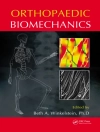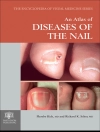Become familiar with the key anatomic ‘corridors’ in the skull base, the sinonasal tract, and adjacent areas to guide and greatly expand your endoscopic surgical competence.
Highlighting the most recent experience from seven top leaders and innovators in the field, this seminal new work presents detailed topographic anatomy of the skull base and adjacent areas in a way not previously seen before.
The result is a multidisciplinary atlas merging anatomy, otolaryngology, neurosurgery, and radiology, so as to facilitate creation of a mental ‘virtual reconstruction’ of the complete approach and operative situs. The result is a greatly extended range of surgical possibilities into previously uncharted territory using endoscopic technology.
Key Features:
- Provides the basis for cultivating a firm and confident understanding of the 3D anatomy of this intricately complex region
- Emphasizes the ability of the endoscopic surgeon to integrate CT and MRI findings into the surgical planning process
- A logical and modular organization of the contents intends to make for easy correlation with the surgical literature
- Brilliant step-by-step presentation of dissections using cadavers, helping readers to fully understand all the anatomical nuances
- Numerous previously unpublished approaches covered here for the first time in a book, step by step
Endoscopic Transnasal Anatomy of the Skull Base and Adjacent Areas is an indispensable resource for fellows and specialists in neurosurgery and ENT surgery wishing to widen their competence in endoscopic skull base surgery.
This book includes complimentary access to a digital copy on https://medone.thieme.com.
Inhoudsopgave
1 Classification of Endoscopic Transnasal Approaches to the Skull Base and Adjacent Areas
2 Nasal Corridors
3 Corridor to the Anterior Skull Base and Orbit
4 Corridor to Sella Turcica, Surrounding Areas, Posterior Skull Base, and Cervical Spine
5 Corridor to Lateral Spaces
6 Transfrontal Approach
7 Transcribriform Approach
8 Transplanum–Transtuberculum Approach
9 Transsellar Approach
10 Transsellar Transdorsal Approach
11 Transclival (Midclivus) Approach
12 Transclival (Lower Clivus) Approach
13 Transodontoid Approach
14 Orbital Decompression, Optic Decompression, Supraorbital Approach, and Transorbital Approach
15 Transpterygomaxillary Approach
16 Infratemporal Fossa Approach
17 Medial Transcavernous Approach
18 Lateral Transcavernous Approach
19 Medial Petrous Apex Approach
20 Infrapetrous Approach
21 The Suprapetrous (Meckel’s Cave) Approach
22 Transcondylar/Transjugular Tuberculum (‘Far Medial’) Approach
23 Medial Parapharyngeal Approach
24 Lateral Parapharyngeal Approach












